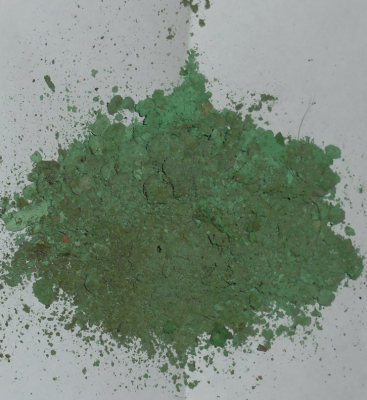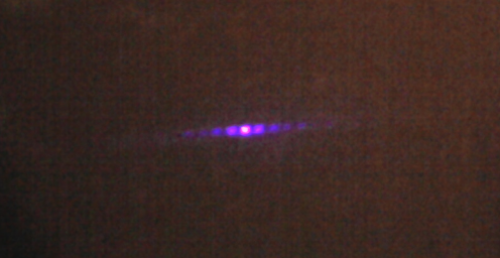-
Posts
7927 -
Joined
-
Last visited
-
Days Won
26
Content Type
Profiles
Forums
Events
Everything posted by Sensei
-
Aren't chemistry experts memorize names of chemical compounds and their typical reactions with other compounds? In inorganic chemistry it's thousands+ more to remember than just a few constants. IMHO it's unavoidable for smart person, who is doing reaction of compounds (especially couple times) to remember result of their reaction. Not to mention shortcuts and full names of chemical elements (118 to remember, 50+ almost required to remember). (Can you imagine "professional" who is searching net for checking what element is f.e. "Au".. ? I cannot..) I even wrote application-game which is learning whole periodic table. It takes hour (or couple hours) of play to remember entire 118 elements (and 118 shortcuts). IMHO better to learn children periodic table than meaningless poems in primary school.. 300,000,000 m/s is sufficient for ordinary layman, not for somebody studying subject.
-
Majority of quantum physicists will never find anything new, nor will become famous.. That depends on which year you're in engineering. The closer finishing what you already started the less sense abandoning it, without a good reason. And how good you are in engineering? Are you making your own electronic devices at home (not homework).. ? Controlling made by yourself electronics from computer, from your own software, remotely or by wire plugged to usb, always sounded to me entertaining..
-
If you want to learn constants in memory, remember value in eV (electron Volts): 510998.928 eV and e=1.602176565*10^-19 C. and of course c=299,792,458 m/s. Once you have all these three, you can on demand calculate mass in kilograms: 510998.928 * 1.602176565*10^-19 / 299792458^2 = 9.1093829170743*10^-31 kg Also remember that mass-energy of electron can be derived from Compton frequency/Compton wavelength and Planck constant. h=6.62606957*10^-34 J*s fC=1.23559*10^20 Hz h*fC=me*c2 ps. I don't know what for Environment Science student needs all this stuff to remember. It's rather for quantum physicists, high energy/particle physicists, etc. Or books/sources are from different decades. See history of speed of light measurement for instance: https://en.wikipedia.org/wiki/Speed_of_light#History Currently accepted value is from 1983.
-

Could biofuel, hydrogen, electric or solar replace jet fuel?
Sensei replied to nec209's topic in Engineering
It's not a matter of research or support. Hydrogen fuel requires Oxygen. Do you want to take it also on board of airplane, or like in currently existing jet engines, take from air.. ? Then compare energy density per liter of different fuels, paying special attention to liquid Hydrogen: https://en.wikipedia.org/wiki/Energy_density Not without a reason rockets look like flying cisterns. -
Energy of photons that we detect is correlated to source material objects that emitted them in the past. See also article about very high energy gamma photons on wikipedia: https://en.wikipedia.org/wiki/Very-high-energy_gamma_ray
-
There is also worth to mention that at different depths currents can flow at different speed and direction, even opposite.. https://en.wikipedia.org/wiki/Subsurface_currents
-
Actually currently plentiful of energy and resources are wasted.. See all these plastic and glass bottles, aluminium beer cans, iron beer cans, all over the place.. See refuse dumps that are covered with layer of ground by bulldoggers. Layers of trash that are later producing methane gas f.e.. If they can do it spontaneously, it's not that hard to force them to do it under control and actually collect produced liquids and gases for later use.. In "Bang Goes the Theory" presenters showed how to easily turn solid plastic trash bottles to liquid hydrocarbons, and use it as fuel to drive a car. Scrap yard searchers are gathering aluminium beer cans, and largely ignoring iron beer cans, gathering drink bottles possible to return to shop ($0.0921 per each), and ignoring non returnable bottles... At least here. For 1 kg of aluminium beer cans here we can get $0.71, one can has mass 18 grams, so there is needed 55.6 cans for 1 kg. Giving price $0.01292 per each. For 1 kg of iron beer cans here we can get $0.171, one can has mass 33 grams, so there is needed 30 cans for 1 kg. Giving price $0.0057 per each. 2.24x less than for aluminium one. And plentiful of (homeless) people is literally ignoring them while searching for stuff. Price of aluminium scrap is $1.06 per kg. While retail aluminium sheets were sold for $4.5 (half year+ ago bought several m2 for my projects). That's ridiculous. I know prices well, because just this week I returned 3 kg of aluminium beer cans, and 1-2 kg of iron beer cans, and something like 60+ bottles. Governments could wipe out all these trashes from cities giving fair prices for everything. Instead of relying on 3rd party companies gathering and wanting to have fair income = bad price for people who are actually involved in searching stuff. The more fair price (closer to retail), the more people will be interested in recovering business, and the less trashes will be laying everywhere. Electronics manufacturers are making their devices with encoded time of life, after which they're broking. And people have to buy new one. Device which would work flawlessly for dozen years (like it was in the past, f.e. I had washing machine for 30 years same..) means no new income for these companies. Conclusion: first waste less, than seek for new sources..
-
That depends on whether mass, volume or molar concentration.. https://en.wikipedia.org/wiki/Concentration This hint should be enough for solving it by yourself. We have with John very lengthy discussion about this subject in thread: http://www.scienceforums.net/topic/87510-sulfuric-acid-in-ppm/
-
There is simple way to check whether you have NaOH. If you mix acetic acid with sodium bicarbonate aka baking soda (used for baking cakes etc.), there will be released carbon dioxide: CH3COOH+NaHCO3->CH3COONa+CO2+H2O Then if you mix sodium acetate with sodium hydroxide, there will be created methane gas: CH3COONa+NaOH->CH4+Na2CO3
-
Try this on-line special relativity mass calculator http://www.ultimate-theory.com/en/2012/12/26/special-relativity-mass-calculator
-
Lack of Oxygen in water is the most killerful thing to water animals. Search net for "substances decreasing oxygen in water". f.e. http://www.eea.europa.eu/themes/water/status-and-monitoring/state-of-surface-waters/water-quality-and-pollution-by-oxygen While fermentation of fruits, bacterias are consuming Oxygen and wasting ethanol. That's why there is need to use fermentation lock to disallow Oxygen to enter container while making f.e. wine, or other alcohol beverage. Search net for "how to measure dissolved oxygen in water", YT is showing this video:
-

Quantum Physics is making stupid people, MORE stupid.
Sensei replied to Elite Engineer's topic in Physics
But you can always change it, by learning physics and quantum physics, at any time.. Start from reading physics history database, entries sorted in order of discovery or theory: http://www.ultimate-theory.com/en/2015/1/27/physics-history-database -
At quantum level there is used special relativity, instead of general relativity, with success. For instance in particle collisions in particle detectors at CERN, or unstable particle/isotope decay. Here you have example with [math]\pi^+[/math], [math]\pi^0[/math] and anti-protons: http://galileo.phys.virginia.edu/classes/252/particle_creation.html
-
CSS allows positioning element in x and y coords. Element can be found by JavaScript by ID, and its coordinate set. If you will set decreasing values, and repeat it (JavaScript timer), there will be animation. You should also control clipping of elements (one element inside of group of elements) to hide numbers.
-
If you will change length L, resistance R will change. The higher L, the bigger resistance R. Take a play with resistance wire, and check resistance with multimeter at different distances from the beginning.. They are sold per meters. Like f.e. 100 Ohms per meter. http://www.ebay.com/bhp/resistance-wire
-
This is certainly wrong statement. Oversimplified at least. If reaction requires certain temperature (and/or pressure) and we will mix substances f.e. at "wrong" temperature f.e. in winter at -10 C, reaction won't be occurring, or it'll be very slowly occurring. Then in summer there will be 30 C, reaction will be taking place. Because exceeded required threshold temperature. Another example, reaction that happens (or not happens) at certain pH, or reaction which is changing pH in middle, or reaction which is occurring when there is certain concentration. At the beginning we have plentiful of water in solution, it vaporize with time (with variable temperature of environment like in winter-summer this is even harder to estimate), and changing concentration.. I need to wait week or two for making Cu2(OH)2CO3 for instance.. (photo taken after getting rid of water of course) For such delayed and slow reactions, I am even using timelapse recording in digital camera, and taking photo every second, minute or hour, and making video. There were cases when hours and hours nothing happened, and then sudden change in a couple of seconds..
-
You're confusing people with this statement. Observation is not literal observation made by human eye. Observation = measurement. Measurement can be done by nature by itself. Without any human, animal or other living form intervention. If we put digital/analog camera in front of our experiment and use it to record, it'll "steal" photons from environment, changing state. I remember how I wanted to make photo of double slit experiment, taking photo by photo, I saw on wall all these interference dots, pressing "take photo" button in camera, and then they were gone in 9/10 of photos... I could turn camera on, and go away of room, and the same. I had to take 10-20 photos to get this: In majority of cases of taking photo, it didn't look like this...
-

The "Whatever Theory" Identifying The World...
Sensei replied to whatever theory's topic in Speculations
No. It's wavelength. Clearly wrote 430, 535, and 600. You missed unit: nanometers. [math]\lambda = \frac{c}{f}[/math] so [math]\lambda * f = c[/math] so [math]f = \frac{c}{\lambda}[/math] Visible light has wavelengths between 380 nm (sometimes 400 nm depending on literature) to 700 nm. Now put them to equation to calculate frequencies, and solve (in f.e. OpenOffice/Excel): [math]f = \frac{c}{\lambda} = \frac{299792458}{380*10^{-9}}= ...[/math] [math]f = \frac{c}{\lambda} = \frac{299792458}{700*10^{-9}}= ...[/math] Frequency has unit Hz (Hertz). MHz, GHz, THz etc. -
Yes, it is. In science, we perform experiment, show it to people. Eventually come up with ready math equation to calculate physical system behaving.. There is no such thing.. You need to spend energy to liberate electron from atom or molecule: E + X -> X1+ + e- where X is molecule, chemical compound or particle. Then we can ionize it even further: E + X1+ -> X2+ + e- Making yet another free electron.. And so on, as many electrons are in atom. Ionization energies increases. The more electrons are ripped off from atom, the more energy is needed to ionize it even further.
-

Telescope to see a person on another planet
Sensei replied to kos's topic in Astronomy and Cosmology
Do you know inverse-square law.. ? Insert power of star (or object that you want to see), and distance in equation, and you will receive W/m2 It can be split to quantity of photons with different energies, per area. For Sun emitting 3.86*1026 J per second energy in photons, at distance 150 bln meters we receive 1367 W/m2. But at distance 4 light years it'll be just 2.15*10-8 W/m2. Simply there is very few photons arriving per second per area unit at such distances.. If we assume average visible photon has 532 nm (green color), single photon has 3.73*10-19 J, Divide 2.15*10-8 W/m2 by 3.73*10-19 J, and there is ~57 bln photons with average energies per m2 per second. That's ~64 billions time less than from our Sun here on Earth. -

Colors in the spectrum and entropy
Sensei replied to petrushka.googol's topic in Modern and Theoretical Physics
Photons are emitted by hot objects in the all directions (inverse-square law). The higher temperature of object, the more energy have photons emitted by object. Everyday objects are emitting photons at infrared/microwave range, because they're pretty cold. But can be seen by f.e. IR camera (that way IR thermometer reads temperature of body from distance without touching it, just by analyzing black body emission). Black body emission is shifted depending on temperature, in one direction or other. If body has same temperature as environment, it receives pretty much as much energy as it emits, and there is balance. BTW, it's pretty cool to see world using IR camera at 100 FPS, and observing objects that are transparent for visible spectrum photons, but reflective for IR photons. -
Not junk, but could be too few for some CPUs, GFX etc. That depends on many factors. You need to count power needed by all elements first. Also whether monitor will use built-in computer power supply, or not. I have not seen shared power supply for computer and monitor for years. The all my monitors have separate power supply. LED monitors don't take much, 25-40 W. Obsolete CRT certainly more. But if you're running on margin, such 40 W could be crucial. Comparison of CRT vs LED power consumption: http://www.tomshardware.com/reviews/lcd-backlight-led-cfl,2683.html Personally I have 500 W (less than mentioned by you). According to GeForce http://www.geforce.com/hardware/desktop-gpus/geforce-gtx-760/specifications "Graphics Card Power (W) 170 W" "Minimum Recommended System Power (W) 500 W" IMHO 600 W should be enough. Unless you will have monitor(s) also connected to shared power supply.
-
Not exactly. Electron can have spin +1/2 or -1/2... Spin-up and spin-down.
-
Why not try UV discharge tube (Deuterium?), or UV lap, instead of relying on Sun light.. ?



